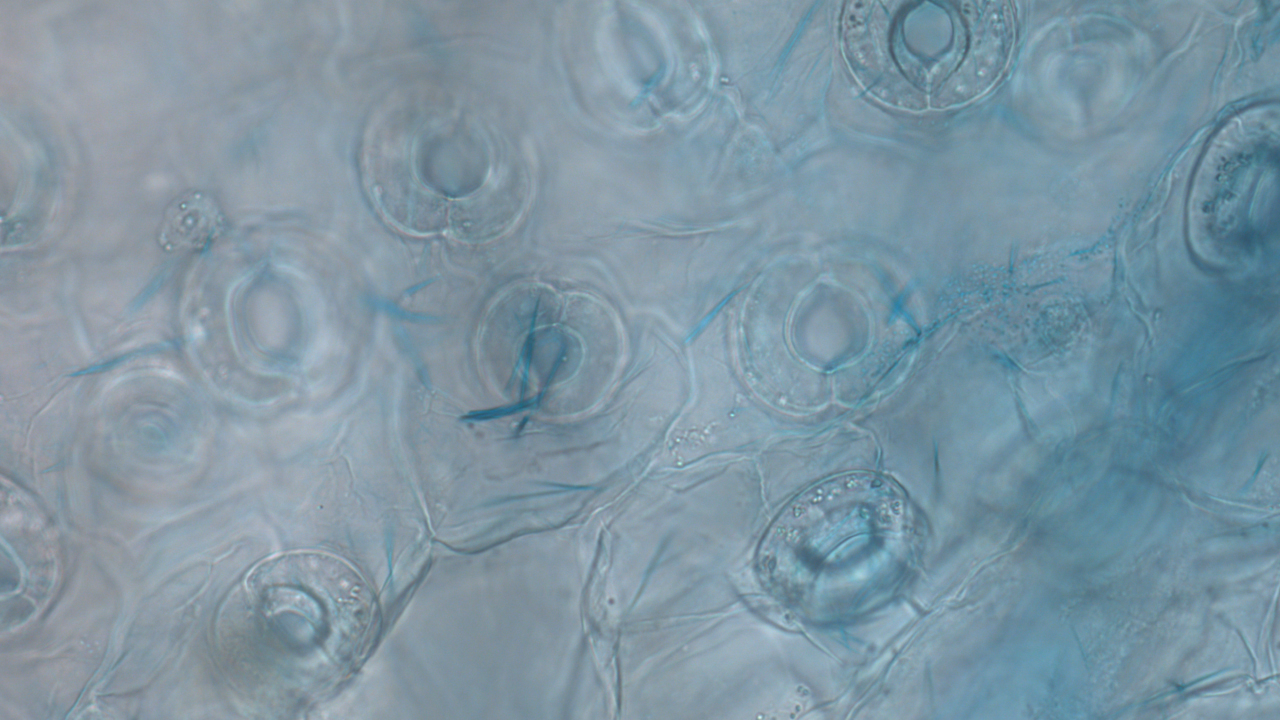The Science
Nitrogen is the biggest nutritional cost in crop production. Earth’s atmosphere is 78% nitrogen. Why not use it? Now we can with Gluconacetobacter diazotrophicus (Gd).
Nitrogen fixation is the conversion of atmospheric nitrogen to a form the plant can use. Plants cannot do this on their own. Traditionally, nitrogen fixation was only available to leguminous crops using bacteria like rhizobia.
Azotic’s® proprietary technology allows ALL crops to fix atmospheric nitrogen.
Gd rapidly enters plant cells through multiple pathways including leaf hairs, stomata, and roots. It continues to multiply within the cells, where it then fixes atmospheric nitrogen exactly when and where the plant needs it – inside the cell, throughout the growing season.
Gd’s efficacy has been thoroughly documented through extensive lab and field applications and is supported by hundreds of peer-reviewed academic papers.
Visual Overview of Gluconacetobacter diazotrophicus (Gd)

Gd Allows N Fixation in Multiple Crops
There are several species of nitrogen fixing bacteria for non-legumes. Some attach themselves to plant roots and fix nitrogen. Others enter the plant and fix nitrogen in intercellular tissues. Gd fixes nitrogen directly inside the plant cell throughout the growing season.
Gd Forms a Symbiotic Relationship With Its Host
Gd is a naturally occurring bacteria originally isolated from sugar cane. It is a gram-negative, non-spore-forming, obligate endophyte. This means that Gd needs a plant host to survive and is highly motivated to get inside the plant as soon as possible to form a symbiotic relationship. Gd enters the plant through multiple pathways. By forming a biofilm, Gd protects itself and the plant from adverse environmental conditions for a period of time (depending on environmental conditions).

Gd Has Multiple Paths of Entry




Gd is Systemic
Gd rapidly colonizes the whole plant. The bacteria multiply within plant cells and enter new tissues as the plant grows, exactly where nitrogen is needed.
Gd Fixes Nitrogen Inside The Plant Cell
Gd works from inside the plant cell to fix atmospheric nitrogen. The symbiotic relationship with Gd allows the plant to provide sugars to Gd in exchange for nitrogen. This is a beneficial exchange for the plant.


Gd Fixes Nitrogen at the Right Place at the Right Time
There are many benefits to being able fix atmospheric nitrogen directly inside the plant cell. Unlike synthetic fertilizer, Gd is not susceptible to loss and avoids competition with soil and rhizospheric microorganisms. Gd provides the plant with a consistent source of nitrogen regardless of environmental conditions or soil variability.
Nitrogen contained in the soil is not always available or accessible by the plant. Nitrogen fixed by Gd does not need to be translocated and is available in the plant cell directly when and where the plant needs it.
Gd Fits Your Farm
Gd fits your farm: whether you want to reduce your nitrogen and maintain yield or maintain your nitrogen and increase yield, Gd supplements and-or enhances current production practices to protect against in-season soil nitrogen losses.

For a more in-depth look at the science behind Gd, please visit our scientific publications page.

